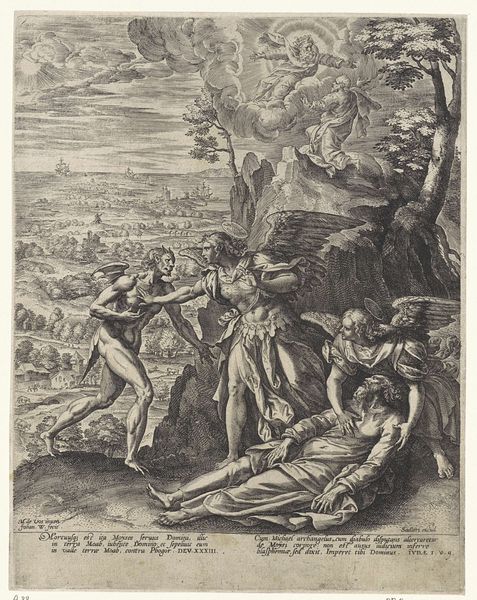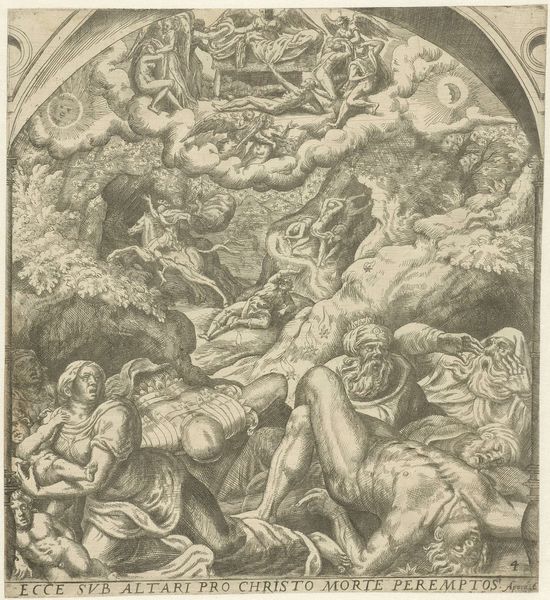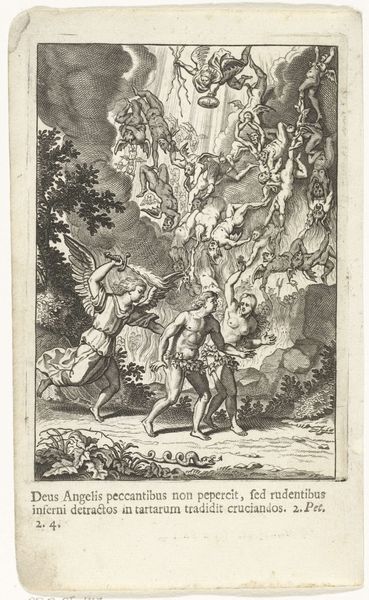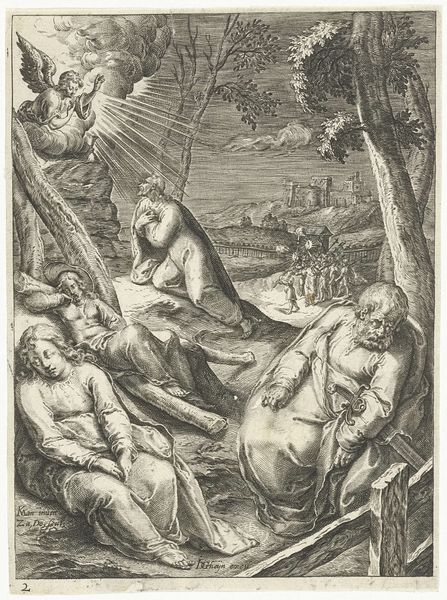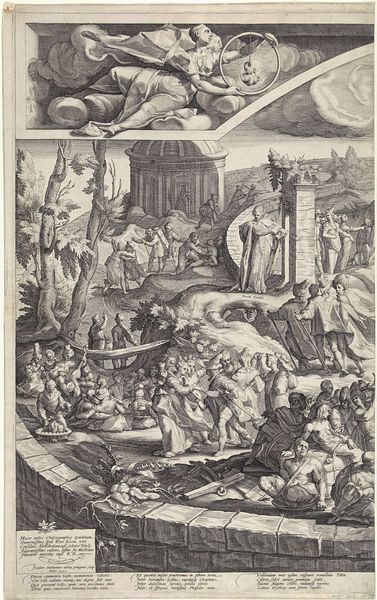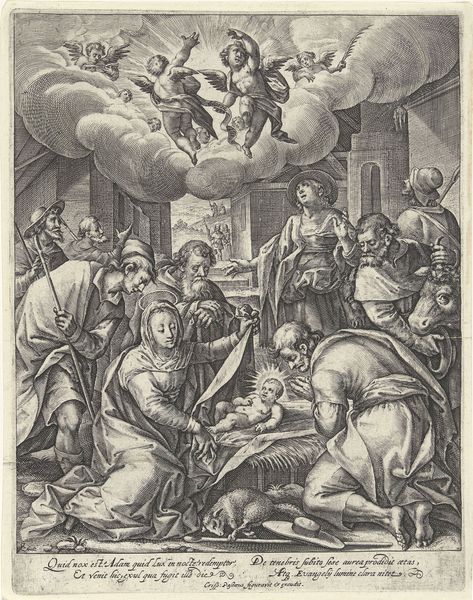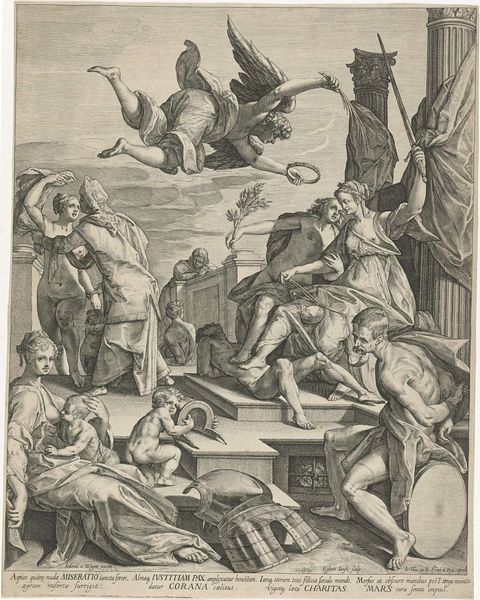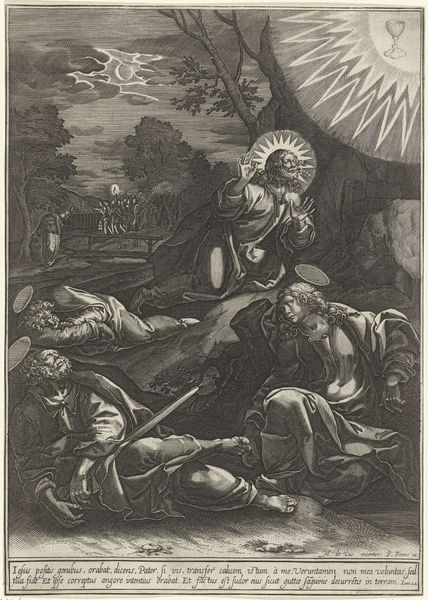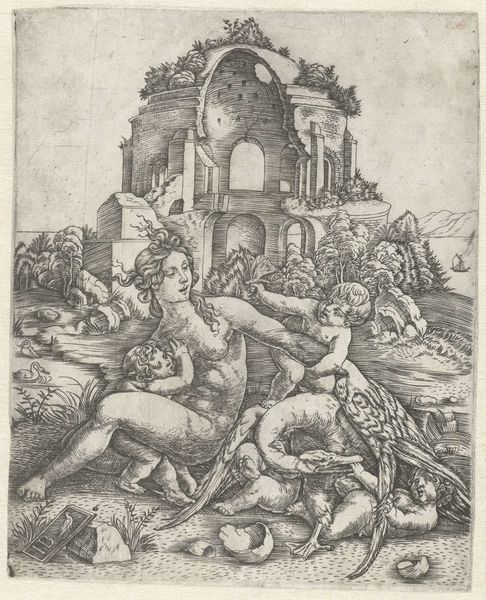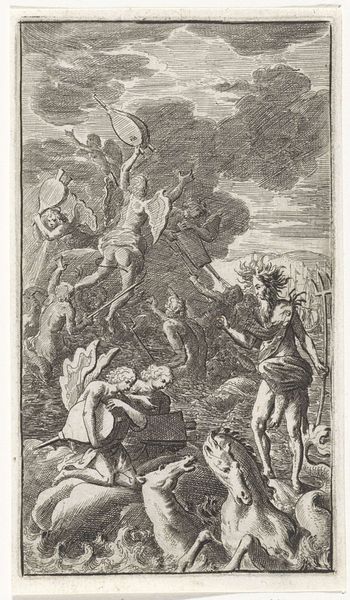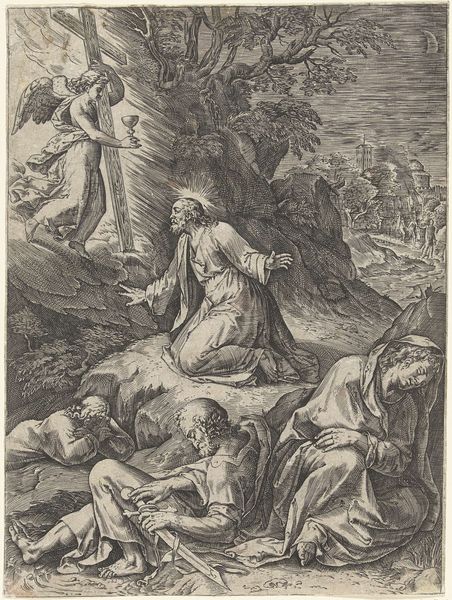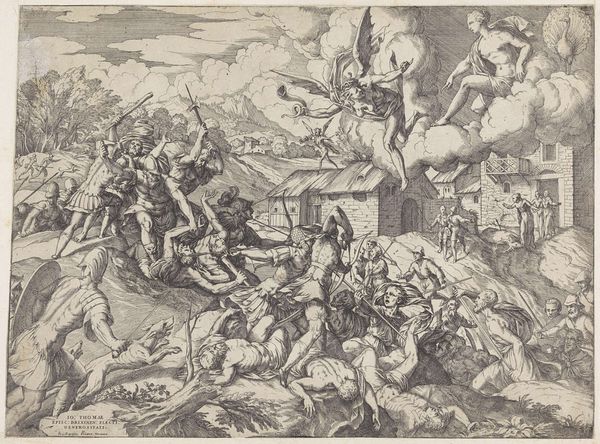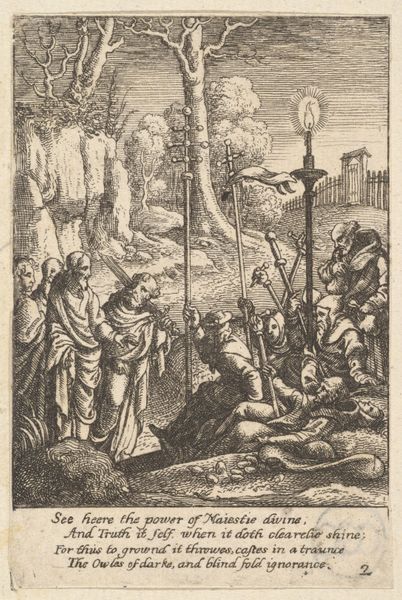
Dimensions: height 316 mm, width 224 mm
Copyright: Rijks Museum: Open Domain
This engraving, "Joris doodt de draak," was made in 1578 by Cornelis Cort and depicts Saint George slaying the dragon. Here, the dragon embodies chaos, the murky depths of the unconscious. St. George, mounted and armed, symbolizes reason, faith, and order triumphing over primal fears. The princess, often overlooked, is a crucial figure, representing the soul awaiting liberation. This scene, laden with Christian symbolism, echoes ancient myths of heroes battling serpents, a motif found across cultures from Mesopotamia to Greece. Consider the serpent in the Garden of Eden. It embodies temptation and primal knowledge. Over time, this image of the serpent evolved, sometimes representing wisdom, other times, pure evil. Such transformations reveal how collective memory and subconscious fears shape our understanding of symbols. The emotional power of this image lies in the eternal conflict it represents: the struggle between light and darkness, order and chaos. It resonates with viewers because it speaks to a deep-seated psychological need to confront and overcome our inner demons. This motif, cyclical and enduring, continues to resurface, evolving with each retelling, yet retaining its primal force.
Comments
No comments
Be the first to comment and join the conversation on the ultimate creative platform.
